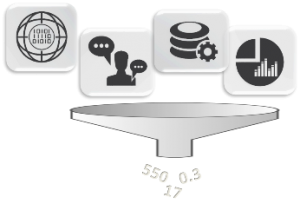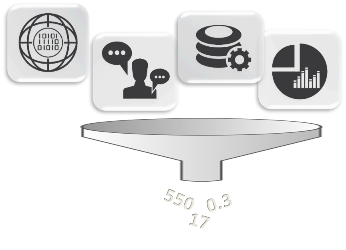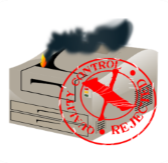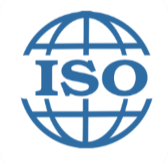
How To Build A Business Case For Online Condition Monitoring
Okay, so you think you’ve got a sense that condition monitoring can help you, but aren’t sure how to go about justifying it.
Let’s start by making sure we’re on the same page with what we mean by online condition monitoring. In this context, online condition monitoring (OCM) is defined as the utilization of measurement hardware and software to continuously check the state of a system, a machine, or a process, generally with the end goal of reducing downtime, increasing efficiency, or reducing waste. These goals are accomplished by producing a set of indicators (events, faults, and alarms) that suggest an action, such as looking further into a potential problem, shutting down a piece of equipment, performing maintenance, or collecting additional data. This article is focused on OEM scenarios, but can easily be translated to end-user scenarios as well.
If you’re unsure how to go about justifying OCM, my suggestion is this: utilize the minimum amount of effort necessary. If it makes sense to spend weeks crunching numbers, then so be it, but if it makes sense to tie OCM into a corporate-level initiative (e.g. around efficiency or quality), then go that route.
The level of management buy-in required to proceed will vary significantly, depending on the level of business impact expected from implementation of an OCM system. Justification can be quantitative and/or qualitative.
Quantitative Justification

You’ll need to gather information about the direct, and indirect, impacts of not having OCM on downtime, efficiency, and waste.
This information is scenario-dependent, but many will fall into one or more of these categories:
- Customer uptime/efficiency/waste – if your customers care about how often your machine goes down and if you can tell them in advance, you need to dig in to understand the cost impact on your customer better, in order to better understand the additional cost they could justify for an OCM-enabled product.
- Maintenance or warranty services – if you offer these services to your customer, here are a few opportunities. You could:
- Reduce labor and travel costs by doing more remote diagnostics, only sending out a tech when needed. You’ll need a good handle on your current labor, travel, and possible warranty costs.
- Increase your market penetration by allowing for a more non-linear expansion of number of systems you could provide services for versus number of additional employees you might need to hire. You’ll need to have a good handle on your current labor, travel, and support equipment costs.
- Modify repair schedules based on both yours and your customer’s appetite for risk. This of course requires you to understand the trade-off between material costs, services costs, and costs associated with system failure.
- Future design improvements – you can gather data and statistics that act as a feedback loop for future generations of your product. Information gathered may inform you to loosen or tighten specs on a particular component, or drive you to change a design or a supplier.
Unfortunately, there is generally no easy way for this information to appear at your fingertips. You’ll want to gather information about: labor, travel, downtime, and material costs. This information will come from several business systems and will require speaking with several people, then manually aggregating data. You’ll need to use this aggregated information as a rough cost target for the condition monitoring sub-system. This should only be used as a ROM (rough order of magnitude) estimate. Anything beyond that will likely be wasted effort at this point.
In parallel, you’ll want to develop a ROM estimate for unit costs of the OCM system. You can then iterate throughout the pilot program to converge on a workable solution.
Qualitative Justification:
After reading through the quantitative justification section, you may think that’s your path to success. Not necessarily. If you can justify your case for OCM qualitatively, you may be able to shorten the process to getting your OCM pilot off the ground. Of course, if it makes sense in your scenario, you can always pull both qualitative and quantitative elements to help make your case. Below are some qualitative motivators to consider.
 Sometimes a recent event (e.g. failed customer audit, shipping bad product) can help make the case.
Sometimes a recent event (e.g. failed customer audit, shipping bad product) can help make the case.
 Sometimes strategic initiatives revolving around efficiency (e.g. lean, ISO 50,001), quality (ISO 9000), environmental impact (e.g. ISO 14001), or safety (ISO 45001) can help you get traction.
Sometimes strategic initiatives revolving around efficiency (e.g. lean, ISO 50,001), quality (ISO 9000), environmental impact (e.g. ISO 14001), or safety (ISO 45001) can help you get traction.
 Customer satisfaction – how much is frustration and stress from unexpectedly down equipment worth to your customers?
Customer satisfaction – how much is frustration and stress from unexpectedly down equipment worth to your customers?
 Marketing benefits can be utilized to help justify the cost if it differentiates you from a competitor. For example, if your customers are in a manufacturing environment, providing detailed information to their MES systems could be a significant benefit.
Marketing benefits can be utilized to help justify the cost if it differentiates you from a competitor. For example, if your customers are in a manufacturing environment, providing detailed information to their MES systems could be a significant benefit.
Where you might head from here:
If you’re interested in more details about how to get started with online condition monitoring, download our guide: Get Started With Online Condition Monitoring – For OEMs.
David LaVine
David has a BS in Electrical Engineering from Rensselaer Polytechnic Institute and an MS in Electrical and Computer Engineering from Georgia Tech. He’s been at Viewpoint Systems since 2013.